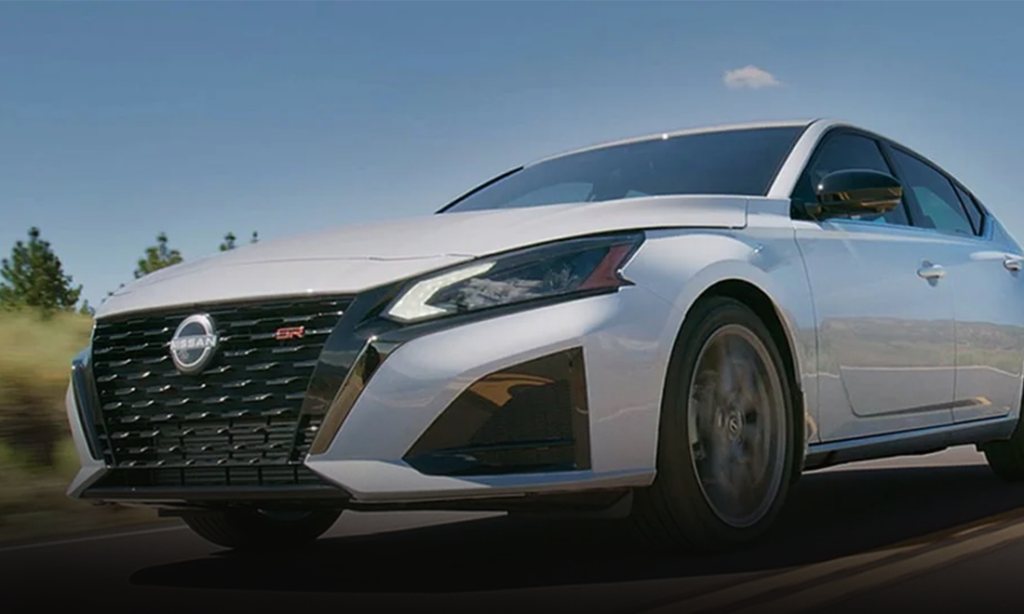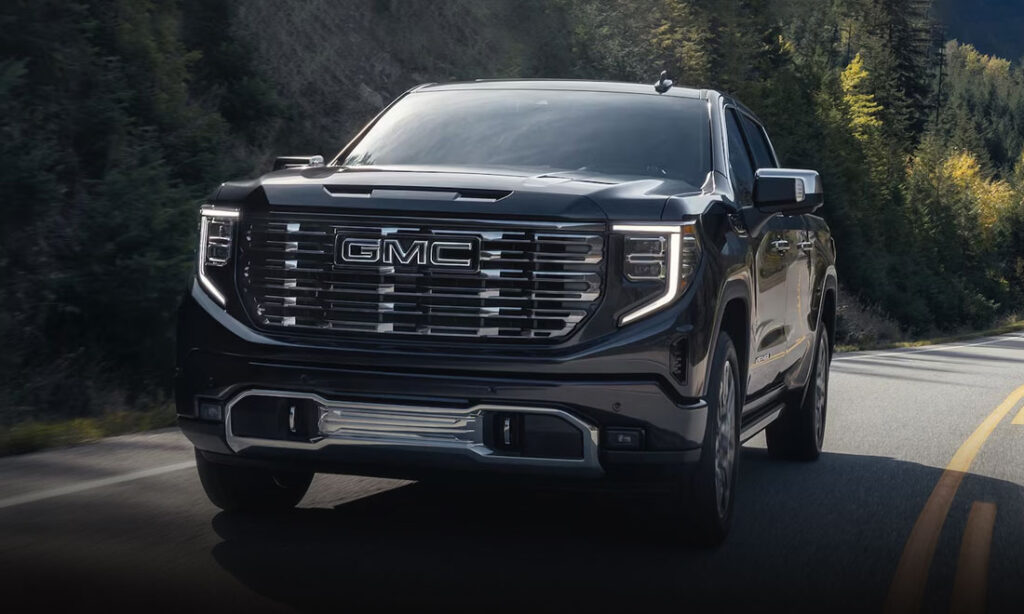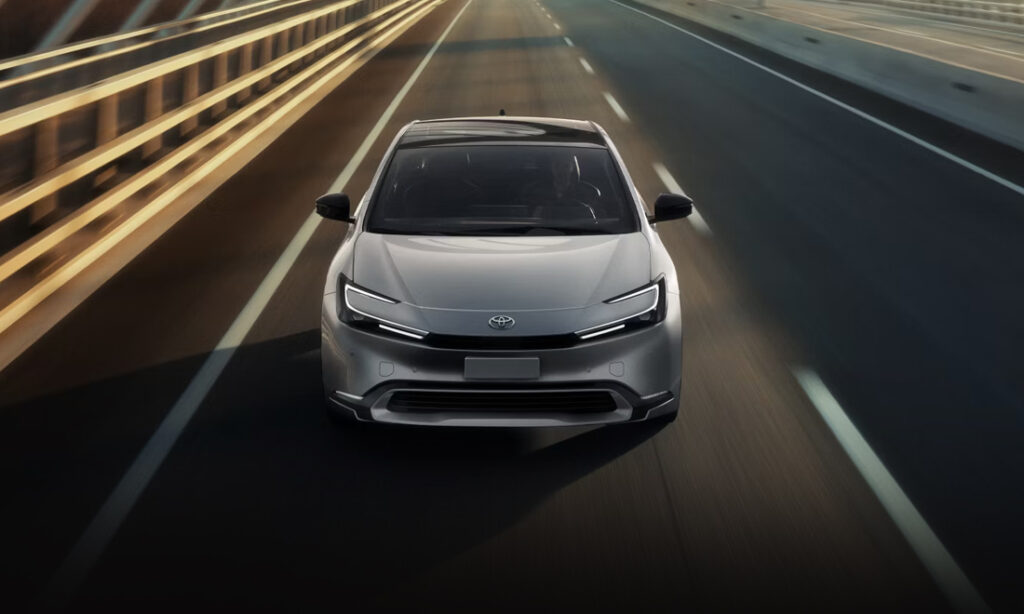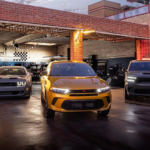Chevrolet Station Wagon Generations: Through the Years
We’re taking a look back through the decades at the very best station wagons that Chevrolet has ever made.Chevrolet’s History of Great Station Wagons
Station wagons might not be wildly popular today but part of their rise to popularity in the first place was thanks in part to Chevrolet. Through more than half of a century, the bow-tie brand continually brought out one smash-hit wagon after another. Today, we’re going back in time through the years to review five of the very best.
Kickstarting A Segment
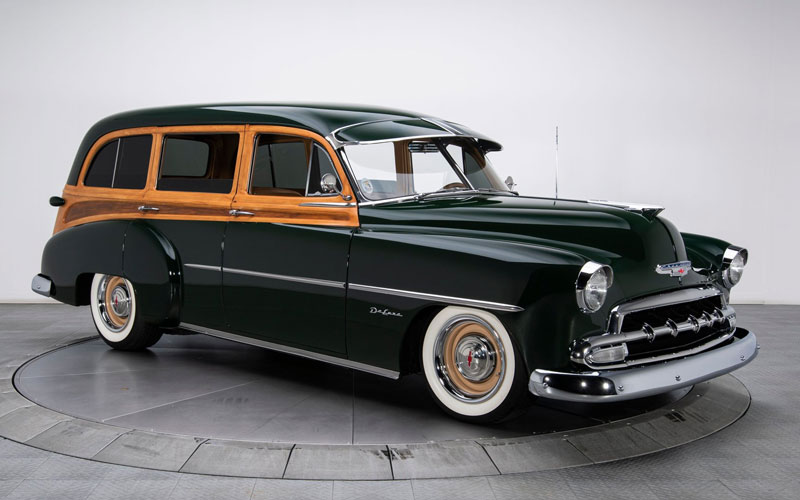
Station wagons got their start as a vehicle that could do it all. It was classy enough to take out on a Saturday night but capable enough to carry cargo and could do both while transporting an entire family. That combination of features was available as early as the 1910s but it wouldn’t be until after WWII that it became a mainstay on American roadways. Chevrolet was one of the big names that helped to make station wagons all the more popular.
The public already knew of the Chevrolet Carryall, a wagon-esque vehicle that would later become the Suburban. In the late 1940s, the company launched both wood-paneled and steel-sided station wagons called the Styleline Deluxe. It resembled the brand’s four-door sedan of the time but featured a prominent rear cargo area.
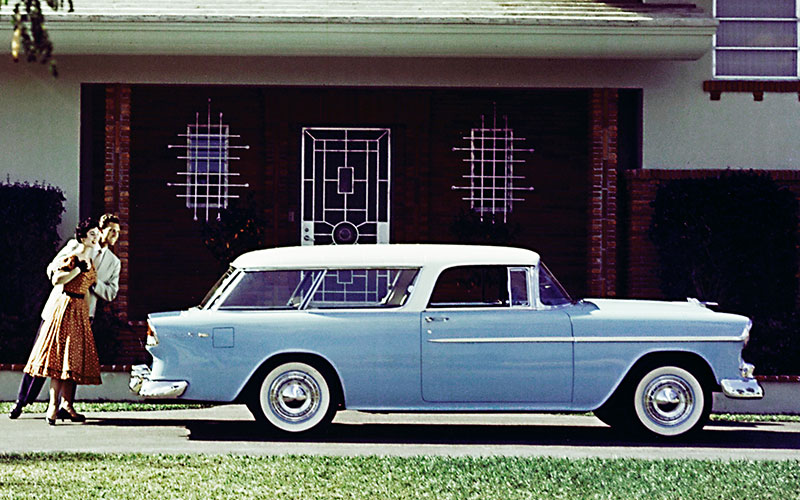
In 1955, the Beauville arrived on the scene. It’s the first Chevy of its kind to feature what most would consider a traditional station wagon shape. It was low but long and featured seating for up to nine passengers. That same year, Chevrolet debuted the Nomad, a two-door station wagon that was available with a big burly 265 CID V8.
Despite solid sales numbers both the Nomad and the Beauville would only last until in their then-current forms until 1957. The former saw a major update while the latter was canceled altogether. Chevrolet even built a station wagon version of the much-maligned Corvair called the Lakewood. Just like the Corvair, it used an 80 hp six-cylinder engine in the rear of the car. In 1962, the Lakewood name went away and the car continued simply as the Corvair. While it didn’t make the splash that the brand hoped it would, other Chevy station wagons were about to start a long string of strong sales years.
Brookwood/Kingswood

Continuing the tradition of fairly short-lived but much-loved wagons were the Brookwood running from 1958 through 1961 and the Kingswood which lived for just two model years, 1959, and 1960. The Brookwood served as a 5-passenger station wagon available with two or four doors while the Kingswood was four-door only and included a rear-facing jumpseat to accommodate up to nine passengers.
Each served as a wagon variant of an already existing platform. The Biscayne, the Bel Air, and the Impala all were available as station wagons. The name Brookwood signified that one was talking about a wagon and not another one of the available body styles. Often times the rear fender would feature the ‘Brookwood’ wordmark instead of the model name.
When the Kingswood left production in 1961, Chevrolet made a rear-facing third row available in the Brookwood. Notably, both nameplates returned for a short three-year run from 1969 through 1972 as trim levels for other Chevy products. For example, it was during this period of time that the Impala Brookwood reappeared. That same time period saw the next significant model in our article though.
Chevy Nova Station Wagon

1962 marked the debut of another Chevy wagon, the II (Two) or II Nova. Considered an answer to Ford’s Falcon compact car, the II Nova was available as a two-door, a convertible, a four-door, and as a station wagon. For the first two years of production, the most potent engine available was a 194 CID inline six with roughly 165 hp.
In 1964, Chevy would drop an optional 283 CID V8 under the hood with up to 195 hp. In 1966, Chevrolet introduced a second generation of the II Nova and included a 350 hp V8 as an available option along with a four-speed manual transmission and the ability to add an SS package. That combination of features continues to be highly sought after in the station wagon world. The very last Chevy II Nova Station Wagon dropped back in 1967. When the all-new Nova debuted sans the II nomenclature in 1969, it did so without ever looking back to its wagon ways.
Malibu Station Wagon
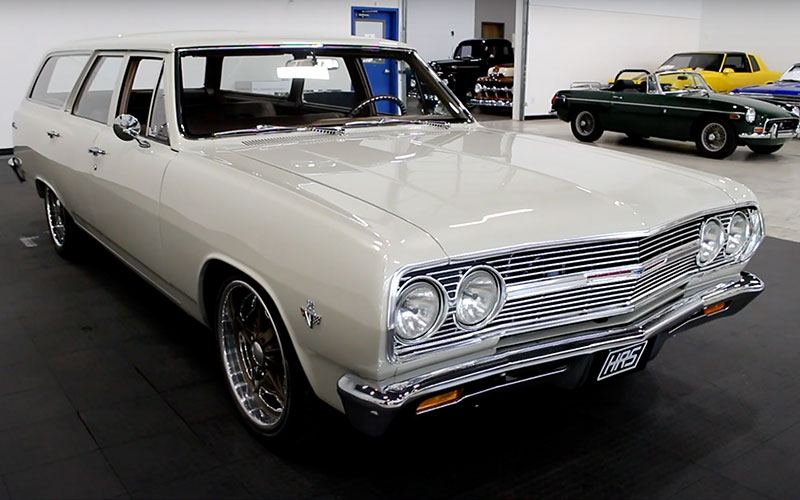
One size above the II Nova was the Malibu and thusly, Chevrolet saw the need for it to have its own station wagon variant that would debut in 1964. From the very start of production, Chevy offered the same inline six in the Malibu as it did in the II Nova. It also made available the V8. A two-speed automatic and a four-speed manual transmission were both on the options list.
In 1967, Chevy offered a Malibu wagon with simulated woodgrain trim called the Concours Edition. By 1972, things weren’t looking so good for the Malibu wagon though and it was discontinued as the model entered its third generation. For its fourth generation, starting in 1978, it returned as a much more squared off vehicle. It arrived on the scene with two 90-degree six-cylinder engines and a V8 available. In 1979, Chevrolet sold over 120,000 Malibu wagons, the model’s best year ever. By 1983 though, the Malibu wagon was gone for good and replaced by our next entry.
Celebrity
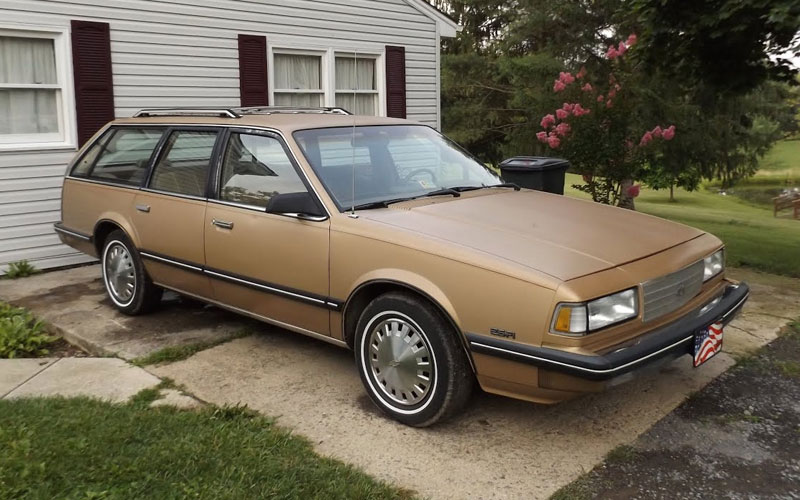
The entry of the Chevrolet Celebrity into the market was a dramatic shift for the automaker’s station wagons. It was the very first to feature a transversely-mounted engine and front-wheel drive. Long gone were the days of a high-performance family hauler with cargo space in the back. Instead, the Celebrity had a heavy focus on fuel efficiency. In 1984, Chevy introduced an available third-row for the Celebrity station wagon.
It was the first time since 1977 that such a feature was available in a mid-sized Chevy product. For the 1987 model year, Chevrolet produced the Celebrity Eurosport VR, a sporty-looking variant with exactly no extra performance modifications. It extended to the wagon version which is very hard to find these days. Finally, in 1990, Chevrolet discontinued the Celebrity. It remains the last midsize wagon that Chevy ever made.
Caprice Wagon

The Caprice Wagon actually dates all the way back to 1966 when it was the Caprice Custom Estate. The Caprice model in total was available as two different two-door hardtops and two different four-door wagons. It sat atop the lineup as the ultimate full-size model in the arsenal. As such, it had a number of advanced features like “Comfortron”, an early automatic climate control system, a tilt-and-telescoping steering wheel, and rear-facing third row.
By 1969, things changed though and the Caprice wagon became the above mentioned Kingswood Estate. That relationship between the two continued through 1972. The next year, the Caprice name would return to the wagon version. By the mid-1970s, the Caprice wagon was a force to be reckoned with. Unlike other Caprice versions, the wagon came standard with a 400 CID V8 that made 175 hp.
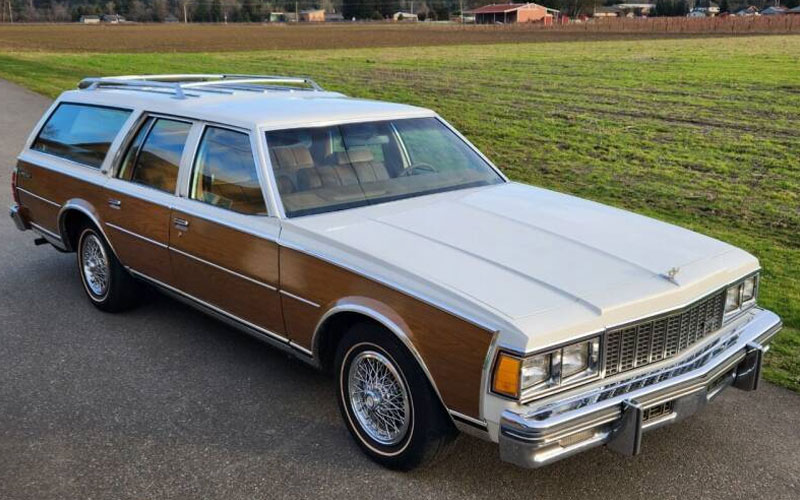
An all-new generation arrived in 1977 and with it came a new body style and new features. A three-way tailgate was standard on every Caprice and did away with the old clamshell version. Just as in past years, the Caprice could be had with two or three rows of seats. The stock engine was a 5.0-liter V8 that now only made 145 hp. A three-speed automatic transmission was also standard.
Things initially only got worse. In 1980, another update included a new base V8 with just 115 hp. Interestingly, Chevy would sell the Caprice wagon with a 5.7-liter V8 diesel engine to customers who asked for it. For the most part, the Caprice would go unchanged until 1986 when it received another big overhaul.
Power increased to 140 hp thanks to a new 5-liter V8. The diesel was axed from the lineup but Chevy also simplified the lineup by offering only an eight-passenger three-row version of the wagon. It also began to offer a police version, code 1A2, of the Caprice wagon for special service use. Sales for the wagon peaked in 1984 with Chevy selling 65,688 units but popularity for the car dwindled to just 12,305 sales in 1990.
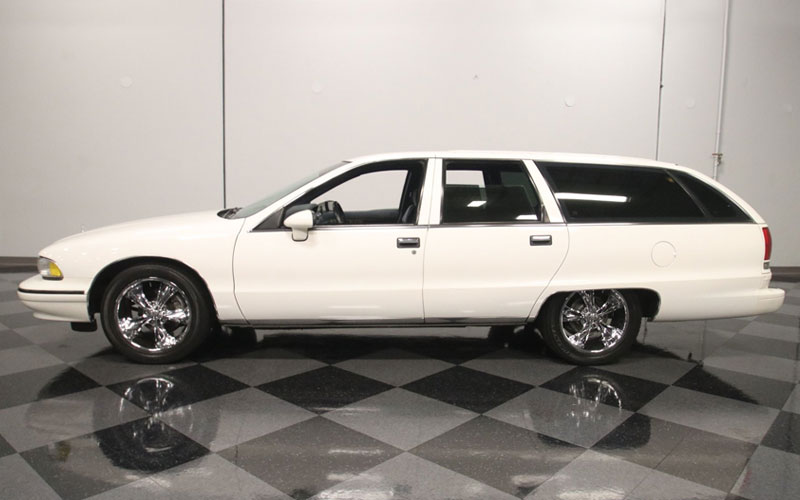
1991 saw the introduction of what is, for now, the last Chevrolet station wagon. The car went back to a longer and larger configuration and wagon models featured skirted wheel wells in the rear. An LT1 package that included a 5.7-liter V8 was standard on every wagon that left the production line. It made 260 hp and 330 lb-ft of torque. Chevrolet also made about 900 police units of the wagon before the model’s demise in 1996.
Will Chevy ever return a station wagon to American roads? Well it sort of did for a short time. Cadillac sold the CTS-V wagon for a few years before it too went the way of the dodo. In general, the US market doesn’t seem all that keen on wagons. Nevertheless, we’ve seen wilder things happen so perhaps there’s good reason to hold out hope that wagons will return again.



